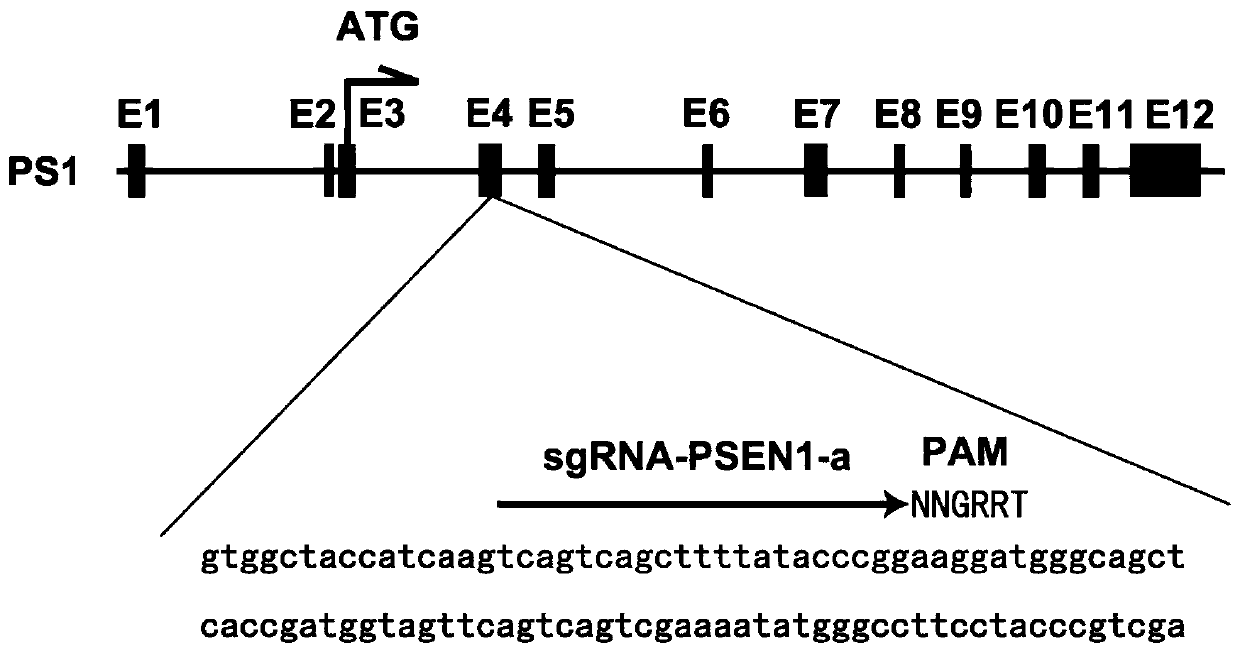Method for injecting virus into specific brain region of animal for gene editing based on non-treatment purpose of PSEN1 gene
A gene editing and virus technology, applied in other directions of inserting foreign genetic material, single-stranded DNA virus, botanical equipment and methods, etc., can solve the problem of embryo transgenic technology chimera cannot be solved, difficult research needs, and the death of transgenic monkeys It can avoid the problem of embryo transgenic technology chimera, avoid genetic differences, and solve the research needs.
- Summary
- Abstract
- Description
- Claims
- Application Information
AI Technical Summary
Problems solved by technology
Method used
Image
Examples
Embodiment Construction
[0014] Macaques have good kinship with humans, very similar brain structures, and their genes are as high as 97.5% similar to human genes. Therefore, observing the pathological effects of human Alzheimer's genes in macaques will have far-reaching significance, and it will also reveal a more objective pathogenic process of AD on a larger scale. In addition, macaques have advanced brain functions such as reasoning, analysis, decision-making, and memory, and can complete the most complex behavioral tasks other than humans. Compared with other animals, it is easier to perform complex and accurate behavioral tests. Therefore, the AD transgenic disease model established with rhesus monkeys will become a more complete and closest animal model of human AD.
[0015] Therefore, the embodiment of the present invention proposes a method for directly injecting exogenous genes into the brain regions of non-human primates, which will be described below using rhesus monkeys as an example.
...
PUM
 Login to View More
Login to View More Abstract
Description
Claims
Application Information
 Login to View More
Login to View More - R&D
- Intellectual Property
- Life Sciences
- Materials
- Tech Scout
- Unparalleled Data Quality
- Higher Quality Content
- 60% Fewer Hallucinations
Browse by: Latest US Patents, China's latest patents, Technical Efficacy Thesaurus, Application Domain, Technology Topic, Popular Technical Reports.
© 2025 PatSnap. All rights reserved.Legal|Privacy policy|Modern Slavery Act Transparency Statement|Sitemap|About US| Contact US: help@patsnap.com



